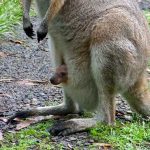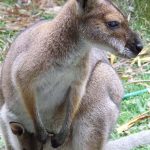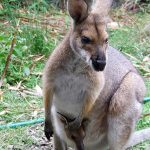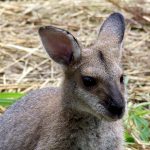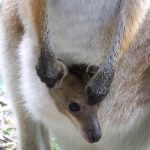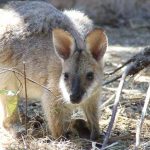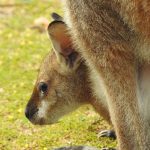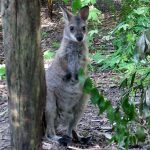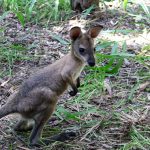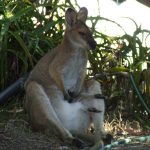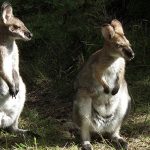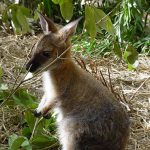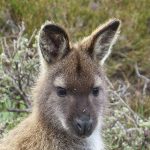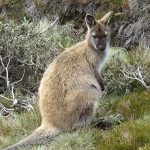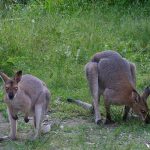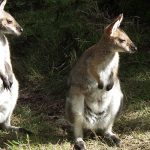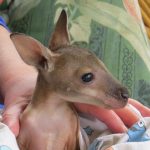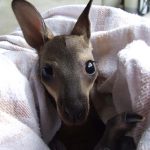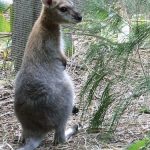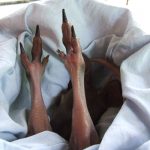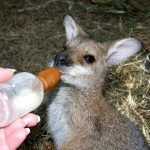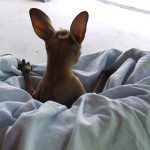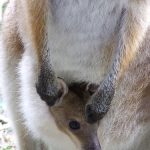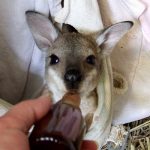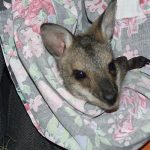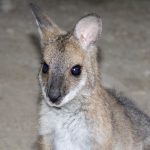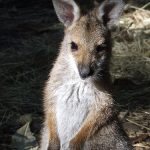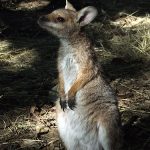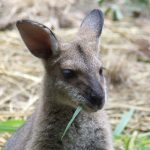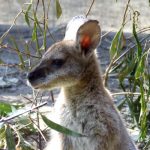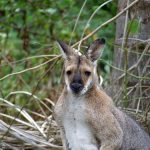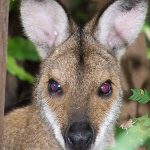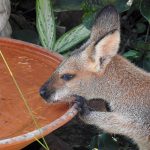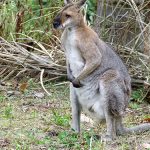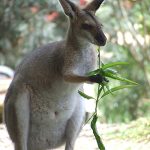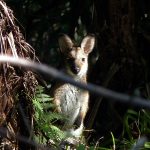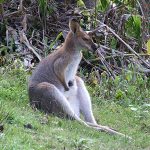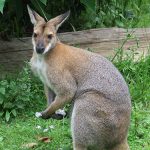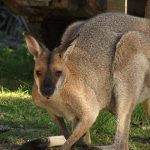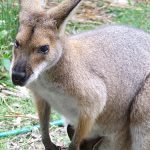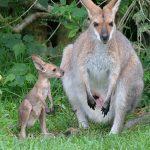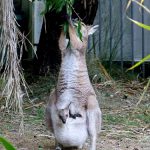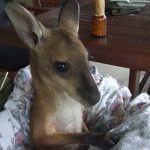The Red-necked Wallaby: A Closer Look
Meet the Red-necked Wallaby, a familiar sight in the wild landscapes of eastern Australia. With its striking fur and unique behaviours, this marsupial is a fascinating ambassador for Australia’s rich biodiversity.
Distinctive Appearance
Imagine stepping quietly through a sun-dappled forest and spotting an animal with:
- Reddish-brown fur graced with soft grey tips, blending seamlessly into the bushland shadows.
- A distinct reddish-brown neck, giving the species its common name.
- A palely grey chest that contrasts softly with the richer hues above.
- A black muzzle accentuated by a fine white stripe running along the upper lip.
- Black paws and toes, which almost look like it’s wearing little black socks, setting off the lighter colouring of its limbs.
Their elegant appearance is not just for show—it helps them blend into Australia’s variable woodland and heath environments, providing both camouflage and a means to absorb or reflect sunlight as needed.
Habitat and Range
- Geographic Range: The Red-necked Wallaby is quite widespread—readily found in Queensland, northeastern New South Wales, and Tasmania.
- Preferred Habitats: These wallabies thrive in eucalypt forests, especially those with nearby open clearings, as well as in tall coastal heathlands.
- Shelter and Activity: During the hot, bright days, they rest in the cool hush of dense vegetation; by early evening, you might see them venture out into clearings or grassy patches as the air cools and shadows lengthen.
Behaviour and Social Life
- Mostly Solitary: Unlike their cousins that form large mobs, Red-necked Wallabies tend towards a solitary life, though they may be seen grazing together under the gentle light of dusk.
- Response to Disturbance: When startled, these wallabies do not band together; instead, they scatter in all directions, each one relying on fleet-footedness and the thick bush for safety.
- Diet: As grazers, their menu consists predominantly of fresh grasses and a variety of herbs and foilage, making them important agents in the health and renewal of their ecosystems.
Reproduction and Lifecycles
- Early Breeding: Females begin to breed at about 14 months, after which most will almost always carry a young joey in their pouch, demonstrating remarkable reproductive efficiency.
- Development: A joey remains in the pouch for about 280 days before venturing out, but continues to suckle and receive maternal care for up to 17 months.
- Males: Reach breeding maturity at approximately 19 months.
- Breeding Season: While breeding occurs year-round on the mainland, in Tasmania, it is more seasonal, running from January to July.
Interesting Facts
- Superb Jumpers: Like all macropods, Red-necked Wallabies are formidable jumpers, able to leap several metres in a single bound, a skill essential for evading predators and traversing varied terrain.
- Nocturnal Grazers: Although many wallabies are crepuscular, Red-necked Wallabies are especially active at night, taking advantage of the cool, calm hours to graze.
- Unique Social Dynamics: Despite their mostly solitary nature, groups are sometimes formed for protection while feeding, yet there is little aggression—an unspoken truce in the quiet moonlight.
- Pouch Management: Adapted for constant motherhood, females can delay the development of a fertilised embryo until the pouch is empty again—an extraordinary reproductive strategy called
embryonic diapause. - Communication: They use their strong hind legs to thump the ground, warning others of approaching danger—a subtle, resonant sound reverberating through the undergrowth.
- Conservation Status: Red-necked Wallabies are protected by law across all Australian states, a testament to the nation’s commitment to maintaining native wildlife populations.
Conservation Message
As enchanting as the Red-necked Wallaby is, its survival depends on healthy forests, thoughtful land management, and continued vigilance against habitat loss and introduced predators. Each time you spot one quietly grazing or bounding through the bush, it serves as a living reminder to cherish and protect the wild places upon which so many unique creatures depend.
| Feature | Detail |
|---|---|
| Scientific name | Macropus rufogriseus |
| Range | QLD, northeastern NSW, Tasmania |
| Habitat | Eucalypt forests, coastal heath, open areas nearby |
| Diet | Grasses, herbs |
| Social behaviour | Mainly solitary, groups form while grazing at night |
| Breeding | Year-round (mainland), Jan–Jul (Tasmania) |
| Pouch life | ~280 days |
| Conservation | Protected species across all states |
Next time you wander through Australia’s wild places at dusk, pause beneath the eucalypts and listen—perhaps you’ll hear the gentle rustle of a Red-necked Wallaby at supper, quietly going about its essential role in the tapestry of life.

